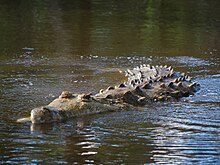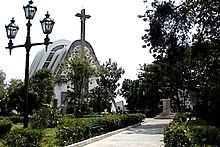Apure
| ||||||||||||||||||||||||||||||||||||||||||||||||||||||||||||||||||||||||||||||||||||||||||||||||||||||||||||||||||||||||||||||||||||||||
Read other articles:

Pseudoscientific alternative medicine practice This article is about static magnetic fields in alternative medicine. For medical uses of electromagnetism, see Electromagnetic therapy. This article is part of a series onAlternative medicine General information Alternative medicine History Terminology Alternative veterinary medicine Quackery (health fraud) Rise of modern medicine Pseudoscience Antiscience Skepticism Scientific Therapeutic nihilism Fringe medicine and science Acupressure Acupunctur…

Area of surface used by aircraft to takeoff from and land on This article is about the aircraft takeoff and landing area. For other uses, see Runway (disambiguation). Landing strip redirects here. For the pubic hairstyle, see Bikini waxing. Not to be confused with Roll way. Runway 13R at Palm Springs International Airport Runway 34 at Nagoya Airfield An MD-11 at one end of a runway According to the International Civil Aviation Organization (ICAO), a runway is a defined rectangular area on a land…

Zsolt Semjén Wakil Perdana Menteri HungariaPetahanaMulai menjabat 1 Juni 2010Perdana MenteriViktor OrbánAnggota Majelis NasionalPetahanaMulai menjabat 15 Mei 2002Masa jabatan28 Juni 1994 – 17 Juni 1998 Informasi pribadiLahir08 Agustus 1962 (umur 61)Budapest, HungariaPartai politikKDNPAnakEmese Borbála Botond Benedek Álmos ÁgostonProfesiPolitikusSunting kotak info • L • B Zsolt Semjén (pelafalan Hungaria: [ˈʃɛmjeːn ʒɔlt], lahir 8 Agustus 1962) ada…

Keuskupan LundLunds stiftGereja Swedia Lambang Keuskupan LundLokasiNegaraSwediaDekanat18 kontrakt[1]Koordinat55°42′15″N 13°11′37″E / 55.70417°N 13.19361°E / 55.70417; 13.19361Koordinat: 55°42′15″N 13°11′37″E / 55.70417°N 13.19361°E / 55.70417; 13.19361StatistikParoki155[1]Kongregasi189[1]InformasiDenominasiGereja SwediaPendiriansekitar 1050[2]KatedralKatedral LundKepemimpinan kiniUskupJoh…

Association football club from Valencia, Spain Football clubLevanteFull nameLevante Unión Deportiva, S.A.D.Nickname(s)Granotes (The Frogs)Los AzulgranasFounded9 September 1909; 114 years ago (1909-09-09)GroundEstadi Ciutat de ValènciaCapacity26,354[1]PresidentPablo SánchezHead coachFelipe MiñambresLeagueSegunda División2022–23Segunda División, 3rd of 20WebsiteClub website Home colours Away colours Third colours Current season Levante Unión Deportiva, S.A.D. (Sp…
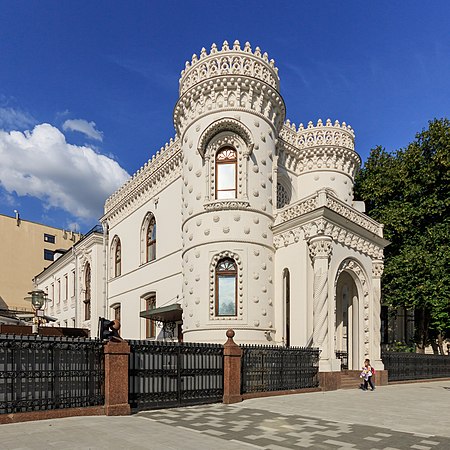
Федеральное агентство по делам Содружества Независимых Государств, соотечественников, проживающих за рубежом, и по международному гуманитарному сотрудничествусокращённо: Россотрудничество Общая информация Страна Россия Юрисдикция Россия Дата создания 6 сентября 20…

مزمارمعلومات عامةتصنيف الريشة المزدوجة هورنبوستيل-ساكس 422.112.2[1] تعديل - تعديل مصدري - تعديل ويكي بيانات لمعانٍ أخرى، طالع مزمار (توضيح). المزمار هو آلة من الآلات الخشبية وآلات النفخ وهي من الآلات القديمة التي صنعها الإنسان من قصب الغاب، ويرجع تاريخ الآلة إلى القرن ا�…

Radio station in Pageland, South Carolina (Charlotte, North Carolina) WGSP-FMPageland, South CarolinaBroadcast areaCharlotte, North CarolinaFrequency102.3 MHzBrandingLatina 102.3 y 107.5ProgrammingFormatSpanish tropicalOwnershipOwnerNorsan Broadcasting(Norsan Media Group of South Carolina, LLC)Sister stationsWGSP (AM), WXNC WOLS, WNOWHistoryFirst air date1975; 49 years ago (1975)Former call signsWCPL-FM (1975–1989)WMAP-FM (1989–1999)WRML (1999–2007)[1]Call sign me…

Ferrari F138KategoriFormula SatuKonstruktorFerrariPerancangPat Fry (Direktur Teknis)Nikolas Tombazis (Kepala Desainer) Tiziano Battistini (Kepala Desain Sasis) Simone Resta (Pemimpin Proyek) Nick Collett (Kepala R&D)Giacomo Tortora (Kepala Dinamika Kendaraan)Loic Bigois (Kepala Aerodinamika) Nicolas Hennel (Kepala Ahli Aerodinamika)Luca Marmorini (Mesin dan Elektronik)PendahuluFerrari F2012PenerusFerrari F14 TSpesifikasi teknis,[1][2]SasisCarbon fibre and honeycomb composite …
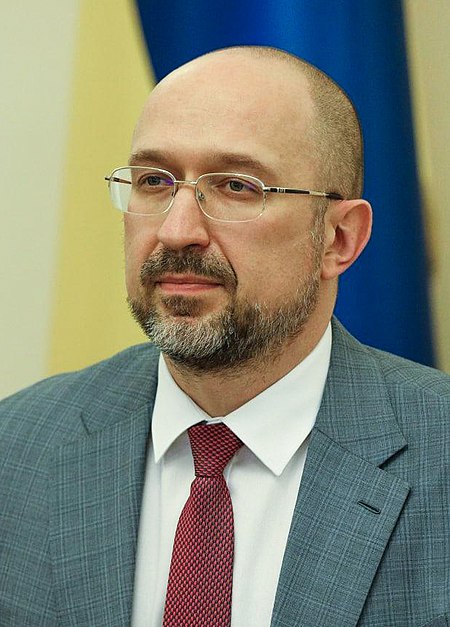
烏克蘭總理Прем'єр-міністр України烏克蘭國徽現任杰尼斯·什米加尔自2020年3月4日任命者烏克蘭總統任期總統任命首任維托爾德·福金设立1991年11月后继职位無网站www.kmu.gov.ua/control/en/(英文) 乌克兰 乌克兰政府与政治系列条目 宪法 政府 总统 弗拉基米尔·泽连斯基 總統辦公室 国家安全与国防事务委员会 总统代表(英语:Representatives of the President of Ukraine) 总理…

Japanese devices made to frighten animals that pose a threat to agriculture A shishi-odoshi breaks the quietness of a Japanese garden with the sound of a bamboo rocker arm hitting a rock. Shishi-odoshi (鹿威し) (literally, deer-frightening or boar-frightening), in a wide sense, refers to Japanese devices made to frighten away animals that pose a threat to agriculture, including kakashi (scarecrows), naruko (clappers) and sōzu. In a narrower sense, it is synonymous with sōzu. A sōzu is a ty…

2023 film by Farah Nabulsi The TeacherTheatrical release posterDirected byFarah NabulsiWritten byFarah NabulsiProduced by Sawsan Asfari Farah Nabulsi Ossama Bawardi Starring Saleh Bakri Imogen Poots Muhammad Abed Elrahman CinematographyGilles PorteEdited byMike PikeMusic byAlex BaranowskiProductioncompanies Cocoon Films Native Liberty Productions Philistine Films Distributed byGoodfellas (International)[1] CAA (USA)[2] Front Row Filmed Entertainment (MENA)Release date 9 Sept…

Anak laki-laki yang sedang makan Orang-orang yang sedang makan bersama dengan beralaskan daun pisang. Seorang wanita sedang memakan buah Makan adalah suatu kegiatan mengkonsumsi makanan atau minuman yang biasanya untuk menyediakan sumber energi bagi makhluk hidup atau organisme heterotrof dan memungkinkan pertumbuhan. Hewan dan heterotrof lainnya harus makan untuk bertahan hidup dan menyediakan sumber energi yang dibutuhkannya. Karnivora memakan hewan lain, herbivora memakan tumbuhan, omnivora m…

Artikel ini sebatang kara, artinya tidak ada artikel lain yang memiliki pranala balik ke halaman ini.Bantulah menambah pranala ke artikel ini dari artikel yang berhubungan atau coba peralatan pencari pranala.Tag ini diberikan pada November 2022. Hughie MackLahir(1884-11-26)26 November 1884Brooklyn, New YorkMeninggal13 Oktober 1927(1927-10-13) (umur 42)Santa Monica, CaliforniaPekerjaanPemeranTahun aktif1910–1927 Hughie Mack (26 November 1884 – 13 Oktober 1927) adalah s…

علوان أحمد عبدالله مهدي الجيلاني معلومات شخصية الميلاد سنة 1970 (العمر 53–54 سنة) محافظة الحديدة. الجنسية اليمن الحياة العملية الفترة التسعينيات المدرسة الأم جامعة صنعاء المهنة كاتب، شاعر، ناقد. روائي. أعمال بارزة الوردة تفتح سرتها، شعر ،دار أزمنة بوابة الأدب تعديل…

Portuguese explorer Gaspar Corte-Reala Portrait of GasparBorn1450Angra do Heroismo, Terceira, Azores Islands, Kingdom of PortugalDisappeared1501UnknownNationalityPortugueseCitizenshipKingdom of PortugalOccupation(s)Navigator, explorerKnown forExploring the North American coastParentJoão Vaz Corte-Real (father) Gaspar Corte-Real (1450–1501) was a Portuguese explorer who, alongside his father João Vaz Corte-Real and brother Miguel, participated in various exploratory voyages sponsored by …
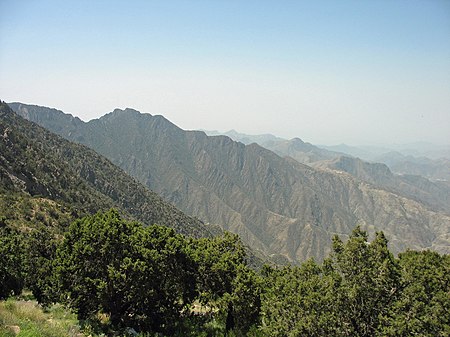
شعار وزارة السياحة السعودية. السياحة في السعودية هي أحد القطاعات الناشئة ذات النمو السريع، وتمثل أحد المحاور المهمة لرؤية السعودية 2030. وإضافة للمكنوز التاريخي والتراثي والتنوع الطبيعي والثقافي للسعودية،[1] تعد أرضها مهد الدين الإسلامي ما يجعلها محل جذب سياحي، حيث يقصد …

This article has multiple issues. Please help improve it or discuss these issues on the talk page. (Learn how and when to remove these template messages) This article needs additional citations for verification. Please help improve this article by adding citations to reliable sources. Unsourced material may be challenged and removed.Find sources: List of historical unrecognized states and dependencies – news · newspapers · books · scholar · JSTOR (Decembe…
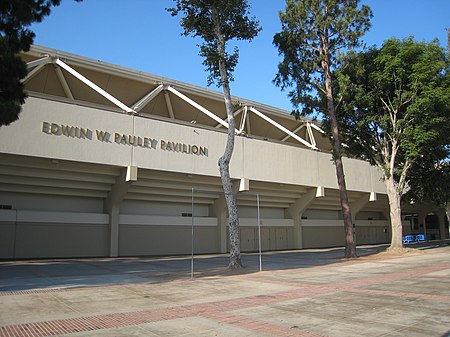
Palau Blaugrana hosted the judo, roller hockey, and taekwondo events for the 1992 Summer Olympics in Barcelona. Pauley Pavilion on the University of California, Los Angeles campus. For the 1984 Summer Olympics, the venue hosted gymnastics events. For the Summer Olympics, a total of 50 venues starting with the letter 'P'. Venue Games Sports Capacity Ref. Pacific Coast Highway 1932 Los Angeles Cycling (road) Not listed. [1] Pakila 1952 Helsinki Cycling (road) Not listed. [2] Palais…

Artikel ini sebatang kara, artinya tidak ada artikel lain yang memiliki pranala balik ke halaman ini.Bantulah menambah pranala ke artikel ini dari artikel yang berhubungan atau coba peralatan pencari pranala.Tag ini diberikan pada Oktober 2022. HIGHTEENAsalSeoul, Korea SelatanLabelIllusion Entertainment HIGHTEEN (하이틴; juga ditulis sebagai HighTeen) adalah sebuah grup vokal perempuan Korea Selatan empat anggota di bawah kontrak Illusion Entertainment.[1][2][3] Mereka…





